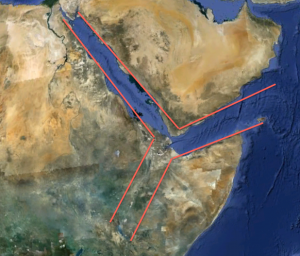This week, as part of our ‘water series’ we will focus on fluoride contamination in drinking water. In some parts of the UK we add fluoride to our drinking water, because small amounts can help to protect your teeth. However, too much fluoride (>1.5mg/L) can lead to a serious medical condition called fluorosis, affecting the development of teeth and bones. This strong dosage dependency can lead to real battles in science communication. Even in the UK, where our fluoride levels are carefully controlled and maintained at a level that benefits us, there are public concerns and conspiracy theories about fluoride.
In places where water is not regulated at a centralised plant, many people have to drink from wells that have dangerously high levels of fluoride. The main source of fluoride is contaminated groundwater, but other sources should also be taken into account when assessing safe concentrations. In the UK, toothpaste provides an extra source of fluoride, whereas in Ethiopia, the tea people drink is high in fluoride. Fluoride poisoning affects two hundred million people worldwide, and is a particular problem in Ethiopia.
The underlying control on fluoride concentration is geological. Fluorine appears in almost every kind of rock. The highest concentrations of fluoride occur in connection with intercontinental hot spots and along rift zones. In geologically unstable regions fluoride enriched fluids rise from the Earth’s crust or mantle up towards the surface sediments.

Rifting breaks apart continents and forms new oceans, often beginning with a 3-armed structure, such as the one in the Middle East/East Africa highlighted by the red lines. Normally the rift axis is underwater, but here one rift occurs on land, through the centre of Ethiopia. Source: Google Earth
The great rift valley cuts across the centre of Ethiopia with a NE-SW strike, pulling the country in two. The rift is an important geological site as this process normally occurs on the seafloor, and can rarely be observed above ground. Rocks in the valley are mostly young volcanics. Samples of drinking water from along the length of the valley have been analysed for their elemental concentrations using ion chromatography and an ICP-MS and (a mass spectrometer that is common in most Earth Science departments, used for measuring the concentration of a whole range of elements in a liquid sample). Seventy eight per cent of the samples would fail EU drinking water regulations, and this is predominantly due to high fluoride levels. The contamination is a result of the water passing through the volcanic rocks in the rift valley.
To remove fluoride, water can be passed through a cleaning system at the point of access or within the home. One cost effective and widely available method for removing fluoride is to filter the water through charred animal bones. Fish bones or eucalyptus wood work just as well for communities that have an ethical objection to the use of animal products. Crushing and heating the bones increases the surface area, and so improves the absorbance capacity. The temperature that the bones are heated to is critical, and the ideal lies between 400 and 500 degrees centigrade. In Ethiopia large kilns are already in place, so most people have access to the necessary technology to remove fluoride from their water. The temperature can be monitored with waxed candles, as the fuse breaks when the temperature is too high, and can be controlled by altering the balance between extra fuel and air supply. The addition of simple ligands can double the Fluoride uptake, so if possible the charred material is treated with Aluminium oxides or sulphate to improve the efficiency.
The technology to remove fluoride from people’s water supply is well developed and easily accessible. However, the science alone is not enough. Collaborations between geologists, engineers, anthropologists, sociologists and entrepreneurs is needed to make a project a success. Social surveys and group discussions are used within communities to determine the best way to deliver the water purification treatment. In some cases it makes sense to treat the water centrally as this is more cost effective. However, in some communities it is more beneficial for families to treat their own water at home. A family can be issued with equipment the size of a bucket and can last up to 6 months. Entrepreneurs can also be involved in financing the scheme, aiming to transform it into a business that can continue to fund itself. This is a truly multi-disciplinary issue.
